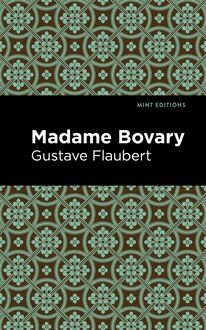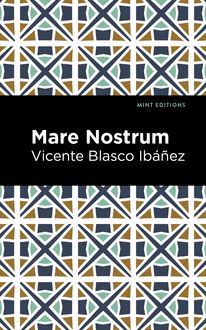-
 Univers
Univers
-
 Ebooks
Ebooks
-
 Livres audio
Livres audio
-
 Presse
Presse
-
 Podcasts
Podcasts
-
 BD
BD
-
 Documents
Documents
-
- Cours
- Révisions
- Ressources pédagogiques
- Sciences de l’éducation
- Manuels scolaires
- Langues
- Travaux de classe
- Annales de BEP
- Etudes supérieures
- Maternelle et primaire
- Fiches de lecture
- Orientation scolaire
- Méthodologie
- Corrigés de devoir
- Annales d’examens et concours
- Annales du bac
- Annales du brevet
- Rapports de stage
La lecture à portée de main
Vous pourrez modifier la taille du texte de cet ouvrage
Découvre YouScribe en t'inscrivant gratuitement
Je m'inscrisDécouvre YouScribe en t'inscrivant gratuitement
Je m'inscrisEn savoir plus
Vous pourrez modifier la taille du texte de cet ouvrage
En savoir plus

Description
Saracinesca (1887) is a novel by Francis Marion Crawford. Originally serialized in Blackwood’s Magazine, Saracinesca became the first in a series of four novels. Followed by Sant’Ilario (1889), Don Orsino (1892), and Corleone (1897), Saracinesca is an epic tale of history, family, and romance set in Rome during a time of immense cultural change. “In the year 1865 Rome was still in a great measure its old self. It had not then acquired that modern air which is now beginning to pervade it.” In this city of living history, church and state vie for control of a people divided on the basis of class. Against this sociopolitical backdrop, Don Giovanni Saracinesca proves an unusual character. Against the expectations of his friends and family, he remains unmarried in his early thirties and refuses to adhere to aristocratic tradition. In reality, he is deeply in love with a married woman, the Duchessa Corona d’Astrardente, who married the Duca—a much older man—when she was young. Although she feels strongly for Giovanni, she knows that her station in life will not allow an affair. Despite this, the two continue to meet, risking both life and reputation for the sake of love. Saracinesca is the first in a series of novels set in Italy by Francis Marion Crawford, a master of romance with a talent for detailed historical research. Although his reputation as a novelist has largely faded in recent years, Crawford was a bestselling author in his time and received glowing reviews for many of his novels and stories. With a beautifully designed cover and professionally typeset manuscript, this edition of Francis Marion Crawford’s Saracinesca is a classic of American literature reimagined for modern readers.
Sujets
Informations
| Publié par | Mint Editions |
| Date de parution | 21 mai 2021 |
| Nombre de lectures | 0 |
| EAN13 | 9781513287676 |
| Langue | English |
| Poids de l'ouvrage | 3 Mo |
Informations légales : prix de location à la page 0,0500€. Cette information est donnée uniquement à titre indicatif conformément à la législation en vigueur.
Extrait
Saracinesca
Francis Marion Crawford
Saracinesca was first published in 1887.
This edition published by Mint Editions 2021.
ISBN 9781513282657 | E-ISBN 9781513287676
Published by Mint Editions®
minteditionbooks.com
Publishing Director: Jennifer Newens
Design & Production: Rachel Lopez Metzger
Project Manager: Micaela Clark
Typesetting: Westchester Publishing Services
C ONTENTS I II III IV V VI VII VIII IX X XI XII XIII XIV XV XVI XVII XVIII XIX XX XXI XXII XXIII XXIV XXV XXVI XXVII XXVIII XXIX XXX XXXI XXXII XXXIII XXXIV
I
In the year 1865 Rome was still in a great measure its old self. It had not then acquired that modern air which is now beginning to pervade it. The Corso had not been widened and whitewashed; the Villa Aldobrandini had not been cut through to make the Via Nazionale; the south wing of the Palazzo Colonna still looked upon a narrow lane through which men hesitated to pass after dark; the Tiber’s course had not then been corrected below the Farnesina; the Farnesina itself was but just under repair; the iron bridge at the Ripetta was not dreamed of; and the Prati di Castello were still, as their name implies, a series of waste meadows. At the southern extremity of the city, the space between the fountain of Moses and the newly erected railway station, running past the Baths of Diocletian, was still an exercising-ground for the French cavalry. Even the people in the streets then presented an appearance very different from that which is now observed by the visitors and foreigners who come to Rome in the winter. French dragoons and hussars, French infantry and French officers, were everywhere to be seen in great numbers, mingled with a goodly sprinkling of the Papal Zouaves, whose grey Turco uniforms with bright red facings, red sashes, and short yellow gaiters, gave colour to any crowd. A fine corps of men they were, too; counting hundreds of gentlemen in their ranks, and officered by some of the best blood in France and Austria. In those days also were to be seen the great coaches of the cardinals, with their gorgeous footmen and magnificent black horses, the huge red umbrellas lying upon the top, while from the open windows the stately princes of the Church from time to time returned the salutations of the pedestrians in the street. And often in the afternoon there was heard the tramp of horse as a detachment of the noble guards trotted down the Corso on their great chargers, escorting the holy Father himself, while all who met him dropped upon one knee and uncovered their heads to receive the benediction of the mild-eyed old man with the beautiful features, the head of Church and State. Many a time, too, Pius IX would descend from his coach and walk upon the Pincio, all clothed in white, stopping sometimes to talk with those who accompanied him, or to lay his gentle hand on the fair curls of some little English child that paused from its play in awe and admiration as the Pope went by. For he loved children well, and most of all, children with golden hair—angels, not Angles, as Gregory said.
As for the fashions of those days, it is probable that most of us would suffer severe penalties rather than return to them, beautiful as they then appeared to us by contrast with the exaggerated crinoline and flower-garden bonnet, which had given way to the somewhat milder form of hoop-skirt madness, but had not yet flown to the opposite extreme in the invention of the close-fitting princesse garments of 1868. But, to each other, people looked then as they look now. Fashion in dress, concerning which nine-tenths of society gives itself so much trouble, appears to exercise less influence upon men and women in their relations towards each other than does any other product of human ingenuity. Provided every one is in the fashion, everything goes on in the age of high heels and gowns tied back precisely as it did five-and-twenty years ago, when people wore flat shoes, and when gloves with three buttons had not been dreamed of—when a woman of most moderate dimensions occupied three or four square yards of space upon a ball-room floor, and men wore peg-top trousers. Human beings since the days of Adam seem to have retired like caterpillars into cocoons of dress, expecting constantly the wondrous hour when they shall emerge from their self-woven prison in the garb of the angelic butterfly, having entered into the chrysalis state as mere human grubs. But though they both toil and spin at their garments, and vie with Solomon in his glory to outshine the lily of the field, the humanity of the grub shows no signs of developing either in character or appearance in the direction of anything particularly angelic.
It was not the dress of the period which gave to the streets of Rome their distinctive feature. It would be hard to say, now that so much is changed, wherein the peculiar charm of the old-time city consisted; but it was there, nevertheless, and made itself felt so distinctly beyond the charm of any other place, that the very fascination of Rome was proverbial. Perhaps no spot in Europe has ever possessed such an attractive individuality. In those days there were many foreigners, too, as there are to-day, both residents and visitors; but they seemed to belong to a different class of humanity. They seemed less inharmonious to their surroundings then than now, less offensive to the general air of antiquity. Probably they were more in earnest; they came to Rome with the intention of liking the place, rather than of abusing the cookery in the hotels. They came with a certain knowledge of the history, the literature, and the manners of the ancients, derived from an education which in those days taught more through the classics and less through handy text-books and shallow treatises concerning the Renaissance; they came with preconceived notions which were often strongly dashed with old-fashioned prejudice, but which did not lack originality: they come now in the smattering mood, imbued with no genuine beliefs, but covered with exceeding thick varnish. Old gentlemen then visited the sights in the morning, and quoted Horace to each other, and in the evening endeavoured by associating with Romans to understand something of Rome; young gentlemen now spend one or two mornings in finding fault with the architecture of Bramante, and “in the evening,” like David’s enemies, “they grin like a dog and run about the city:” young women were content to find much beauty in the galleries and in the museums, and were simple enough to admire what they liked; young ladies of the present day can find nothing to admire except their own perspicacity in detecting faults in Raphael’s drawing or Michael Angelo’s colouring. This is the age of incompetent criticism in matters artistic, and no one is too ignorant to volunteer an opinion. It is sufficient to have visited half-a-dozen Italian towns, and to have read a few pages of fashionable aesthetic literature—no other education is needed to fit the intelligent young critic for his easy task. The art of paradox can be learned in five minutes, and practised by any child; it consists chiefly in taking two expressions of opinion from different authors, halving them, and uniting the first half of the one with the second half of the other. The result is invariably startling, and generally incomprehensible. When a young society critic knows how to be startling and incomprehensible, his reputation is soon made, for people readily believe that what they cannot understand is profound, and anything which astonishes is agreeable to a taste deadened by a surfeit of spices. But in 1865 the taste of Europe was in a very different state. The Second Empire was in its glory. M. Emile Zola had not written his ‘Assommoir.’ Count Bismarck had only just brought to a successful termination the first part of his trimachy; Sadowa and Sedan were yet unfought. Garibaldi had won Naples, and Cavour had said, “If we did for ourselves what we are doing for Italy, we should be great scoundrels;” but Garibaldi had not yet failed at Mentana, nor had Austria ceded Venice. Cardinal Antonelli had yet ten years of life before him in which to maintain his gallant struggle for the remnant of the temporal power; Pius IX. was to live thirteen years longer, just long enough to outlive by one month the “honest king,” Victor Emmanuel. Antonelli’s influence pervaded Rome, and to a great extent all the Catholic Courts of Europe; yet he was far from popular with the Romans. The Jesuits, however, were even less popular than he, and certainly received a much larger share of abuse. For the Romans love faction more than party, and understand it better; so that popular opinion is too frequently represented by a transitory frenzy, violent and pestilent while it lasts, utterly insignificant when it has spent its fury.
But Rome in those days was peopled solely by Romans, whereas now a large proportion of the population consists of Italians from the north and south, who have been attracted to the capital by many interests—races as different from its former citizens as Germans or Spaniards, and unfortunately not disposed to show overmuch good-fellowship or loving-kindness to the original inhabitants. The Roman is a grumbler by nature, but he is also a “peace-at-any-price” man. Politicians and revolutionary agents have more than once been deceived by these traits, supposing that because the Roman grumbled he really desired change, but realising too late, when the change has been begun, that that same Roman is but a lukewarm partisan. The Papal Government repressed grumbling as a nuisance, and the people consequently took a delight in annoying the authorities by grumbling in secret places and calling themselves conspirators. The harmless whispering of petty discontent was mistaken by the Italian party for the low thunder of a smothered volcano; but, the change being brought about, the Italians find to their disgust that
-
 Univers
Univers
-
 Ebooks
Ebooks
-
 Livres audio
Livres audio
-
 Presse
Presse
-
 Podcasts
Podcasts
-
 BD
BD
-
 Documents
Documents
-
Jeunesse
-
Littérature
-
Ressources professionnelles
-
Santé et bien-être
-
Savoirs
-
Education
-
Loisirs et hobbies
-
Art, musique et cinéma
-
Actualité et débat de société
-
Jeunesse
-
Littérature
-
Ressources professionnelles
-
Santé et bien-être
-
Savoirs
-
Education
-
Loisirs et hobbies
-
Art, musique et cinéma
-
Actualité et débat de société
-
Actualités
-
Lifestyle
-
Presse jeunesse
-
Presse professionnelle
-
Pratique
-
Presse sportive
-
Presse internationale
-
Culture & Médias
-
Action et Aventures
-
Science-fiction et Fantasy
-
Société
-
Jeunesse
-
Littérature
-
Ressources professionnelles
-
Santé et bien-être
-
Savoirs
-
Education
-
Loisirs et hobbies
-
Art, musique et cinéma
-
Actualité et débat de société
- Cours
- Révisions
- Ressources pédagogiques
- Sciences de l’éducation
- Manuels scolaires
- Langues
- Travaux de classe
- Annales de BEP
- Etudes supérieures
- Maternelle et primaire
- Fiches de lecture
- Orientation scolaire
- Méthodologie
- Corrigés de devoir
- Annales d’examens et concours
- Annales du bac
- Annales du brevet
- Rapports de stage



















